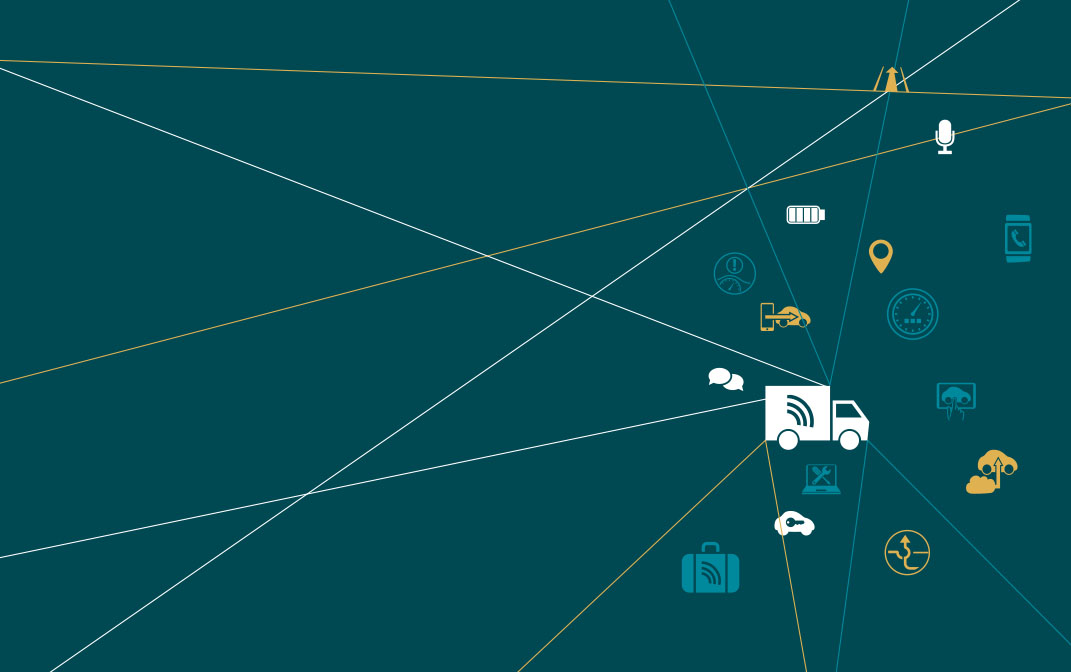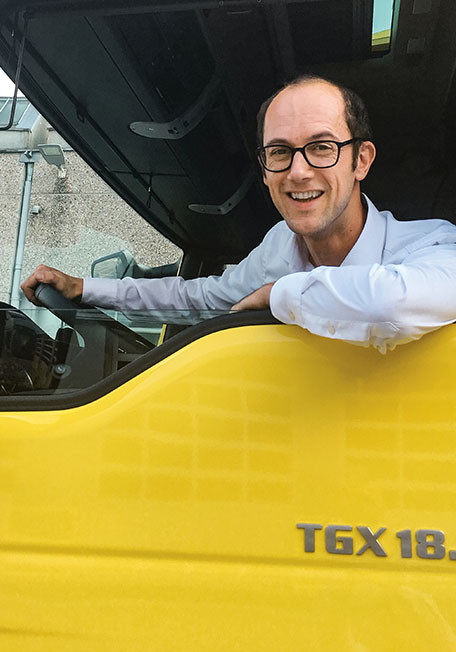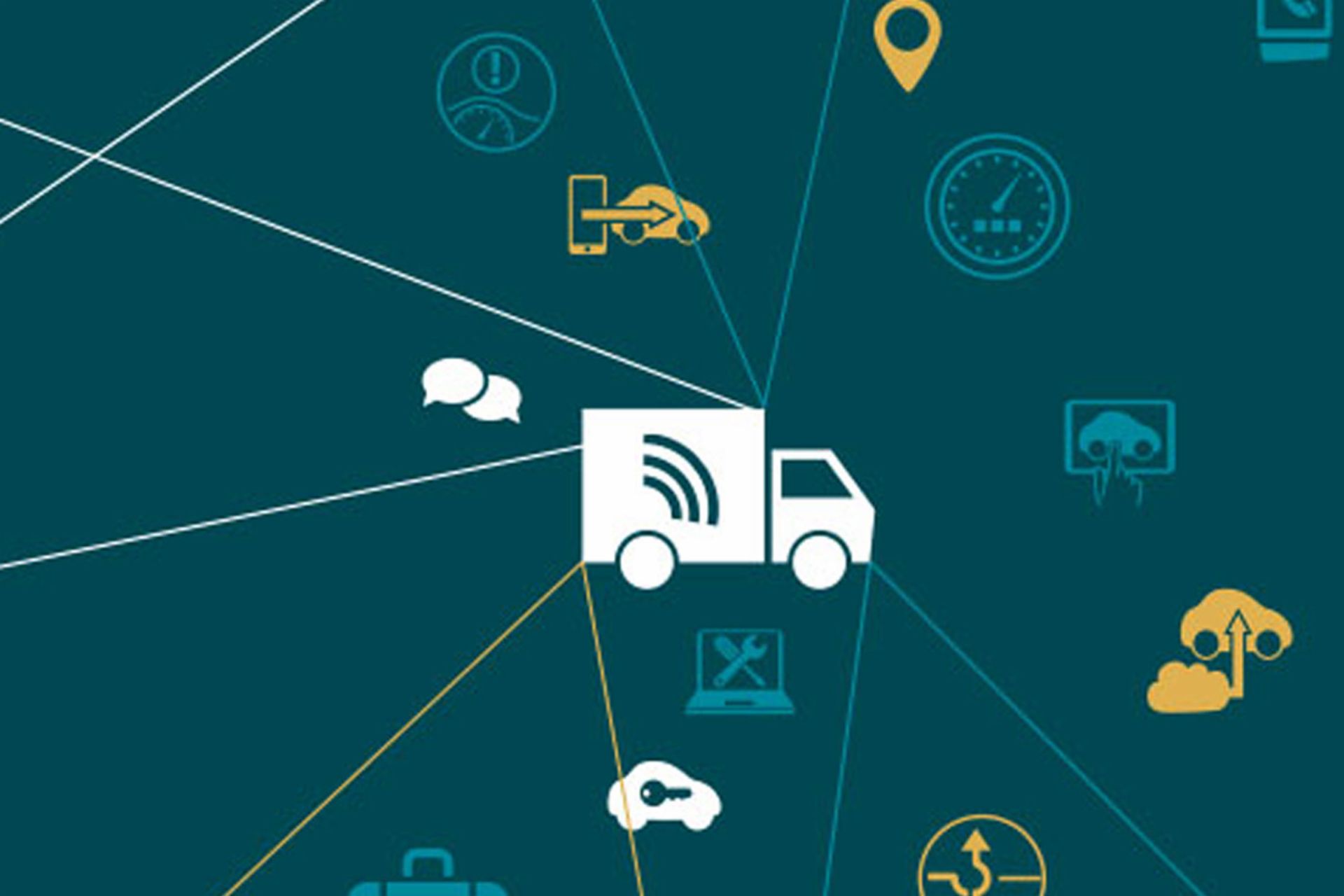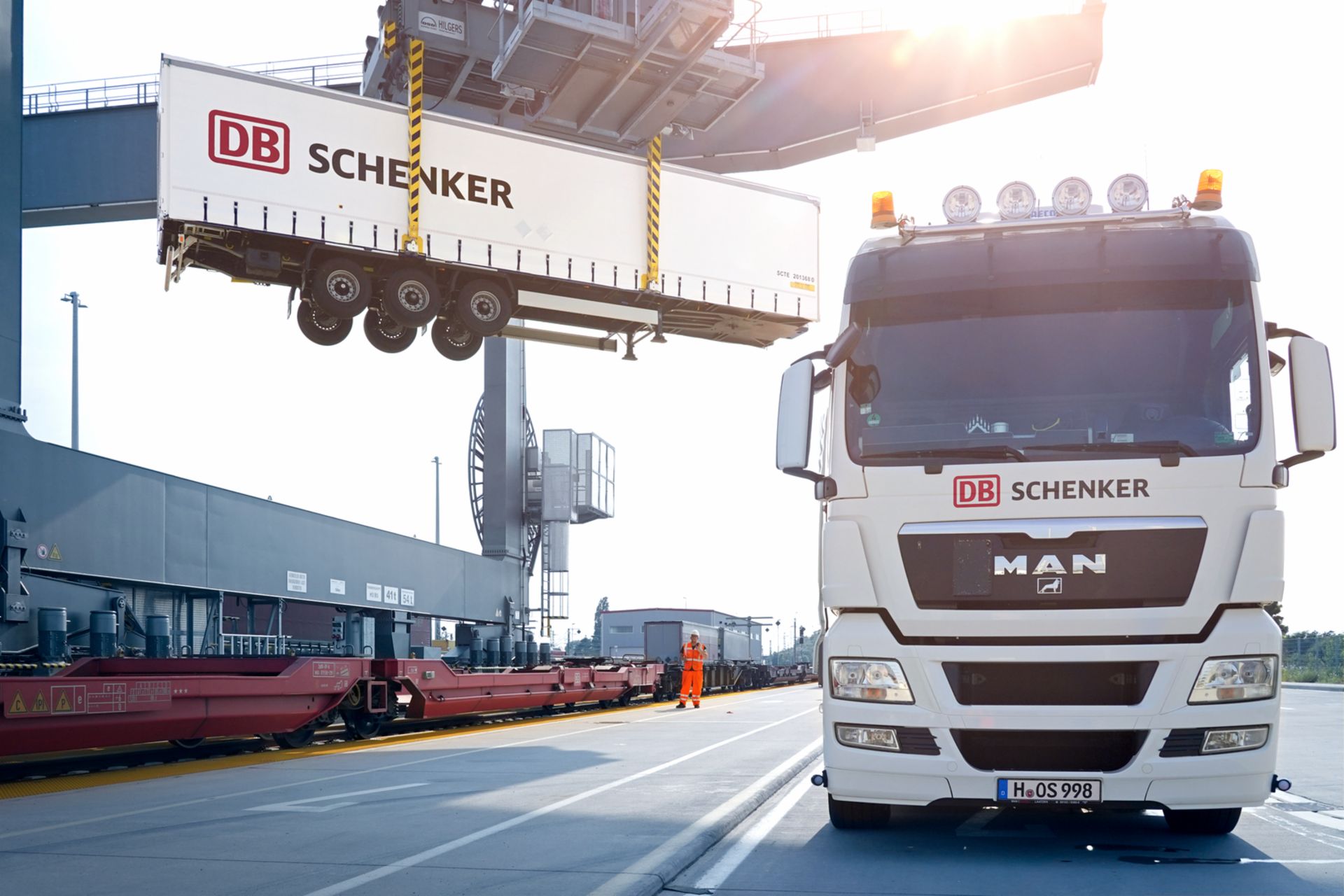With over-the-air software updates, new infotainment, comfort, and efficiency features can soon be activated in MAN vehicles while en route. A trip to the workshop can wait.
Johannes Pöppelmeyer pulls into a rest stop with his MAN TGX truck, turns off the engine, and opens the digital vehicle menu. An update is available; the fleet operator had ordered and paid for it already. While he was driving, the installation file was downloaded over the RIO box, the standard on-board telematics module. Pöppelmeyer confirms the installation and activates it using a code. It takes but a few seconds—and just like that the MAN truck is equipped with the latest version of the GPS-assisted predictive cruise control system, MAN EfficientCruise. And all of that happens without a trip to the workshop.
2020In 2020, MAN will be putting vehicles capable of over-the-air updates on the road.
Johannes Pöppelmeyer does not actually drive trucks for a living—he is a development engineer at MAN in Munich. But the picture painted here is very close to reality. “Downloading updates and then activating additional vehicle features will soon be a reality for our customers,” declares Pöppelmeyer. The engineer is talking about various infotainment, comfort, and efficiency features such as idle shutdown, optimized gear shifting programs, voice control, or an upgrade to the latest version of the cruise control system.
Of course, that assumes that nearly all vehicles will be equipped with the required hardware as a factory option in the future. Pöppelmeyer explains that things are moving in this direction, as “with increasing volumes, economies of scale are seen with the components, and hardware prices fall. In the future, the variation in vehicles will increasingly be determined by the configuration of the software.”
Needs are changing
What has recently become possible for some passenger vehicle manufacturers will soon also be available in commercial vehicles. MAN sees great potential in offering certain features as retrofitted options. “Of course we also have to think of the truck’s second life,” says Pöppelmeyer, adding: “If the vehicle is sold after a few years, its intended use might also change, and along with that the driver’s needs.” Say, for example, the first owner did not use the idle shutdown feature on medium-haul routes. The feature, however, can be quite useful for delivery services in the city. Or the other way around, maybe the GPS-assisted cruise control system, MAN EfficientCruise, was not absolutely necessary in a delivery vehicle, but the new medium-haul operator might not want to do without it. Requirements change, and the technology can soon be adapted in near real time. Another example is different language packages for the vehicle menu—which can be quite useful if the truck is sold abroad or if the company employs drivers from different countries.
During development, collaboration with Volkswagen Group experts was helpful: “Our passenger car colleagues are somewhat ahead of us in this area, although they are developing their products for different use cases. In those cases, individualization is often driven by lifestyle choices, whereas for commercial vehicles, emphasis is on the functionality during demanding day-to-day freight forwarding operations,” explains Pöppelmeyer.
The collaboration with our colleagues in Wolfsburg was particularly beneficial when creating the security concept. MAN and Scania also work closely together on safety, with the aim of implementing a harmonized approach to utilize economies of scale during vehicle development, while the back-end systems and IT are customized to company-specific processes. “A software engineer and a vehicle engineer work together in the development team on a project, for example on a map update feature or on the activation,” Pöppelmeyer adds. Through this collaboration, both companies are continuously learning.


MAN development engineer Johannes Pöppelmeyer works in the project team on software updates and remote diagnostics.
“Downloading updates and then activating additional vehicle features will soon be a reality for our customers.”Johannes Pöppelmeyer
Development engineer, MAN
Service without time spent in the workshop
In addition to the update feature, the telematics module includes remote diagnostics. All error codes and their history can be viewed in a web application for the authorized workshop. In the future, additional data from the vehicle will also help during troubleshooting to identify the issue as precisely as possible; for example, oil and coolant temperature curves, the number of gear shifts, driving time in each gear, and other trend data provide information on the operating conditions of the vehicle. With this data, the cause of the faults can be precisely narrowed down, and the workshop can prepare any repairs in the best possible way. This data can also be used for predictive maintenance, whereby maintenance is carried out in a timely manner so that faults do not occur in the first place.
With increasing connectivity, security is of particular importance. As a result of the use of a growing number of software applications and a permanent online connection, vehicles are a potential target for cyber attacks, similar to smartphone or computer operating systems. Within the framework of incident management, it will soon be possible to install a required system update—once again, without needing to go to the workshop.
Beginning in 2020, MAN will be putting the first vehicles on the road that will be capable of over-the-air updates—also to collect field data to further develop the system. At the beginning of 2021, customers will then also be able to order the first retrofitted features as an upgrade. Thanks to standardized electric and electronic architecture, the over-the-air updates and feature activation will be possible not only in trucks, but also in MAN buses.









